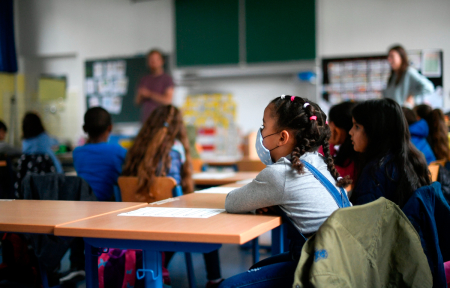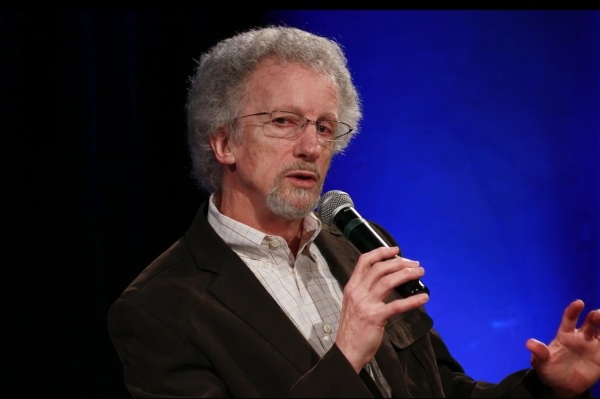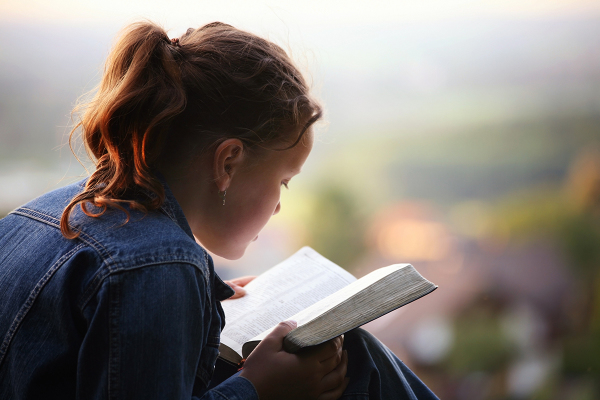Over 80% of public schools say COVID negatively impacted student behavior, study finds

A new study suggests that an overwhelming majority of public schools report increases in negative student behavior, with many linking a rise in absenteeism and other serious behavioral issues to the COVID-19 pandemic and remote learning arrangements.
The National Center for Education Statistics, an arm of the U.S. Department of Education's Institute of Education Sciences, released the study's findings Wednesday as part of its School Pulse Panel, providing data on the pandemic's impact on K-12 schools. Data was collected from 846 participating schools between May 10 and May 24.
Eighty-seven percent of the public schools reported that the COVID-19 pandemic has negatively impacted students' socio-emotional development for the 2021-2022 school year, and 83% of public schools agree that students' behavioral development has been negatively impacted.
Over half (56%) of schools reported increased student misconduct in the classroom, and 49% reported a rise in rowdiness outside the classroom.
In addition, 48% of schools reported an increase in acts of disrespect towards teachers and staff and a 42% rise in the use of prohibited electronic devices in class. The survey respondents attributed this growth in misbehavior to the lingering effects of the COVID-19 pandemic.
The rise in student absenteeism is another issue schools consider to be an aftereffect of the pandemic. The increase in absences does not appear to be unique among low-income or urban schools, which reported a 75% increase. Schools with lower student poverty rates and rural schools reported a 73% and 71% increase in chronic absenteeism, respectively.
"[W]hen we see 72 percent of our public schools report an increase in chronic absenteeism among our students, it poses an opportunity for education leaders to act quickly using tested approaches that work," NCES Commissioner Peggy G. Carr said in a statement. "It is our responsibility at NCES to disseminate data describing the severity of the situation."
Kevin Welner, director of the National Education Policy Center think tank housed at the University of Colorado Boulder School of Education, wrote in a Friday statement to The Christian Post that the survey "should be just one more wake-up call."
"We need to be investing in our schools and our children. They need us," he continued.
"The NCES survey paints a remarkably coherent picture, beginning with increased student and teacher absences, followed by remarkable difficulty in finding qualified substitute teachers, then students experiencing socio-emotional difficulties, then increased behavioral problems, and finally a request by school leaders for help such as support for students' socioemotional development and for student and staff mental health, as well as the hiring of more teachers and staff."
Tony Kinnett, executive director of The Chalkboard Review, believes the solution to student behavioral problems is "twofold." He proposed that students "need a reason to be in school," and there needs to be a return of subjects like art and trade into the classrooms.
"But I would say more important than that is that parents and teachers need to be held accountable, which means if your kid is violent, suspension needs to be on the table," the education journalist said in an interview with CP. "You know, people say, 'Well, what if that's not best for that student?'"
"I understand that, and I'm not saying it's the golden goose solution here, but what I am suggesting is there are 29 other students in that classroom who are negatively affected, who are unable to learn as effectively by a student who has been disruptive, being allowed to return and continue to disrupt the classroom environment, not to mention the students feel unsafe."
Lindsey M. Burke, director of the Center for Education Policy at the conservative think tank Heritage Foundation, sees a correlation between the COVID-related school closures and the reported increase in student absences and misbehaviors.
"Children need interaction with their teachers, peers, and friends, and much of that was foreclosed to them because of unnecessarily prolonged school shutdowns," Burke wrote in a Friday statement to The Christian Post. "We're likely to see the negative ramifications of these misguided policies impacting an entire generation of students."
According to an April study from the Centers for Disease Control and Prevention, more than four in 10 teenagers felt "sad or hopeless" during the pandemic lockdowns, and one in five contemplated taking their own lives.
The study noted that virtual learning was a poor substitute for in-person social contact, adding that overall, more than 37% of students experienced poor mental health.
Around 52% of students who stopped feeling close to their friends during the school closures reported persistent feelings of sadness or hopelessness, compared to 35.4% who continued feeling close to their school friends despite school being closed.





















